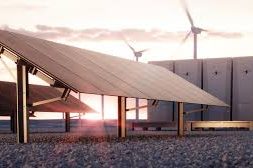
How Tesla Opening Its Supercharger Network Alters the EV Charging Map – EQ Mag
American car buyers are increasingly choosing electric vehicles, but the country’s map of public highway chargers has a lot of gaps.
Those blank spots are seen as a big hurdle to wider EV adoption, and EV market leader Tesla Inc. TSLA 0.30%increase; green up pointing triangle has started to fill a few of them in.
The company has opened a handful of its U.S. fast chargers to non-Tesla vehicles for the first time as part of a 17-country pilot that is now in the U.S., Europe and Australia.
Tesla told the Biden administration it would open 3,500 pieces of equipment to drivers of all kinds of EVs by the end of next year. That move represents about 20% of its existing Supercharger network, though the company is outpacing all other networks combined in adding new fast chargers, according to government data.

The company began building its private Supercharger network in 2012 when few auto makers were considering EVs.
The U.S. is trying to create a spider’s web of fast chargers that can repower cars in about 30 minutes. The moves are an attempt to ease “range anxiety,” the name given to the stress that drivers may have about running out of juice on longer road trips.
The Bipartisan Infrastructure Law provides $7.5 billion to jump-start the build-out—a sizable amount of funding into the nascent charging industry.
Tesla would qualify for federal money to build chargers, as long as the equipment paid for with public dollars is open to drivers of any kind of car. These chargers would need to be fitted with an alternative charging port that can fit non-Tesla EVs.
New EV sales reached a global market share of 10% last year, driven mainly by growth in China and Europe. U.S. sales of new, fully electric vehicles reached 5.84% in the third quarter and in some states has become a mainstream purchase.
Fast chargers are the least common way to charge. Most EV charging happens at home.
Overall, there are three types of charging ports. The most common is the most familiar: a 120-volt wall plug. It recharges a car slowly, but this works fine for many commuters. Many drivers install level 2 chargers at their homes, and this is the kind of charger you often see at shopping centers, parks or offices.
Types of chargers available for electric vehicles

Drivers can download an app such as PlugShare to help them find chargers. Different EV-charging networks also have their own apps, while Tesla vehicles have a trip-planning feature.
Slower chargers are sometimes free at places like shopping centers, but drivers should expect to pay for fast charging, which requires a significant—and expensive—backbone of utility infrastructure.
What does charging cost consumers? It depends. Estimates based on national averages show home charging is the cheapest way even after residential electricity prices rose 11% in a year.
Charging costs—at home or in public—might change based on time of day and peak hours, depending on the electricity market and charging provider. Like gasoline, electricity prices vary across the U.S., often widely.
















